Ok so this is actually done using some clever tricks.
Basically it's not actually moving the status bar, its moving an image of the status bar.
Disclaimer: I YOLO'd this implementation so I make no guarantees on if it'll work out of the box
Starting with iOS7 you can take a picture using
UIView *screen = [[UIScreen mainScreen] snapshotViewAfterScreenUpdates:NO];
There's a bit more useful information I saw here. But basically the status bar is cropped from the picture and added to a UIWindow with a windowLevel above UIWindowStatusLevelBar that will mask the real status bar. Something like:
UIWindow *statusBarWindow = [[UIWindow alloc] initWithFrame:[UIScreen mainScreen].bounds];
statusBarWindow.windowLevel = UIWindowLevelStatusBar;
statusBarWindow.hidden = NO; // fun fact you don't have to add a UIWindow to anything, just setting hidden = NO should display it
statusBarWindow.backgroundColor = [UIColor clearColor]; // I have no idea if this is necessary but since it's now visible you def don't want it to have a color
...
// The view that will hold the screen shot
UIView *statusBarView = [[UIView alloc] initWithFrame:[UIApplication sharedApplication].statusBarFrame];
statusBarView.clipsToBounds = YES;
// Now we add the screen shot we took to this status bar view
[statusBarView addSubview:screen]; // screen is the UIView from previous code block
// Now add this statusBarView with the image to the window we created
[statusBarWindow addSubview:statusBarView];
Now the rest really depends on what your implementation is looking like but from here you really just need to handle moving the view with either a pan, or whatever action is causing the new view to come in through the side:
// you're going to want to hide the status bar when this action starts so that your new window is visible
[[UIApplication sharedApplication] setStatusBarHidden:YES withAnimation:UIStatusBarAnimationNone];
// then inside whatever method is handling the sliding you're going to adjust the frame of the statusBarView
// this can be done explicitly by setting a new frame, or animating its x position, or whatever
// if you're doing it explicitly something like:
CGFloat offset = self.viewThatIsScrolling.contentOffset.x; // may be negative depending on direction that is being swiped
statusBarView.frame = CGRectMake(offset, 0, self.statusBarView.frame.width, 20.0f);
// or maybe even
statusBarView.transform = CGAffineTransformMakeTranslation(offset -previousOffsetAmount, 0); // you only want it to move over by whatever new amount so it can match up, this will have to be tracked somehow if you go this route
...
// and finally once the 'sliding' is done don't forget to remove the screenshot and unhide the status bar
// (can check by looking at the offset value from earlier or as a callback after animation, or whatever)
[[UIApplication sharedApplication] setStatusBarHidden:NO withAnimation:UIStatusBarAnimationNone];
[statusBarView removeFromSuperview];
statusBarView = nil;
Also note this doesn't handle orientation changes or anything (the fixed frame might cause it to not work). you could probably use autoResizingMask or something
